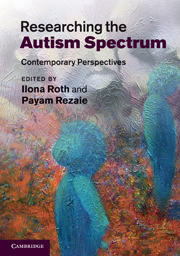Introduction
Published online by Cambridge University Press: 04 February 2011
Summary
The term ‘Autism Spectrum’ currently embraces a cluster of conditions known as Autism Spectrum Disorders or ‘ASD’, that are characterised by impairments in social functioning, verbal and non-verbal communication, together with repetitive and stereotypical patterns of behaviour and interests. Impairments within each of these ‘core’ clinical domains can range in severity from mild to profound, and intellectual disability may be present in more severe cases. The classification of ASD broadly includes classic autism (childhood autism; autistic disorder), Asperger syndrome and Pervasive Developmental Disorder Not Otherwise Specified (PDD-NOS) (Levy et al. 2009). Classic autism is frequently diagnosed around the age of 3 (and may be diagnosed as early as 2 years of age) (Baird et al. 2003; Landa, 2008). Asperger syndrome often presents with more subtle symptoms, and is usually diagnosed later on in childhood (frequently around 11 years of age), and occasionally in adults (Howlin and Asgharian 1999; Toth and King 2008).
While the precise causes of autism remain a mystery, prevalence estimates have risen almost exponentially within the last six decades, making autism a major global concern. Initially considered rare, current estimates suggest that as many as 1% of children under the age of 8 years may have an autism spectrum diagnosis (Baird et al. 2006), with boys being diagnosed up to four times more than girls. More than half a million people are thought to be living with autism in the UK alone (National Autistic Society, 2007), and in the US autism is considerably more common today than it was in the 1980s (Yeargin-Allsopp et al. 2003).
- Type
- Chapter
- Information
- Researching the Autism SpectrumContemporary Perspectives, pp. 1 - 16Publisher: Cambridge University PressPrint publication year: 2011
References
- 1
- Cited by

